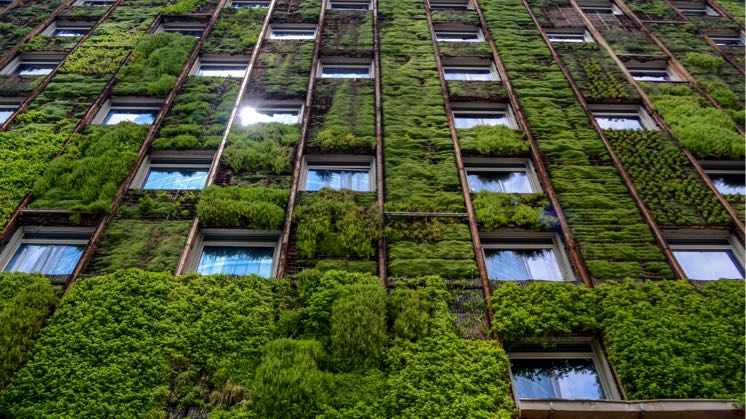Posted by Admin on 25-04-2024 in Shiksha hub
M.ARCH. IN ENVIRONMENTAL DESIGN at A.P.J. Abdul Kalam Technological University: Introduction, Admission, Registration, Eligibility, Duration, Fees, Syllabus 2024

Introduction about M.Arch in Environmental Design at A.P.J. Abdul Kalam Technological University
The Master of Architecture (M.Arch) in Environmental Design at A.P.J. Abdul Kalam Technological University is a comprehensive program designed for aspiring architects who are committed to the principles of sustainable design. This program is particularly tailored to meet the increasing global demands for buildings that are environmentally responsible, energy-efficient, and sustainable in the long term.
Spanning two years, the M.Arch in Environmental Design program combines rigorous academic coursework with practical, real-world applications. Students engage in a variety of subjects such as sustainable building technologies, ecological theories, environmental psychology, and urban resilience planning. The curriculum is structured to foster innovative thinking and equip students with the tools and knowledge necessary to address complex environmental challenges through design.
The program emphasizes a multidisciplinary approach, drawing insights from architecture, urban planning, and environmental sciences. This integration enables students to understand the broader impact of architecture on the environment and society. Students are encouraged to explore advanced technologies and strategies for reducing the ecological footprint of buildings and urban landscapes.
Admission Process
Admission to the M.Arch in Environmental Design program at the university typically involves several steps:
1. Application Submission: Candidates must submit a detailed application, including their academic records, portfolio, and a statement of purpose.
2. Entrance Examination: Applicants may need to clear a national or university-level entrance exam focused on architecture.
3. Interview: Shortlisted candidates are usually called for an interview to assess their commitment and suitability for the program.
Eligibility Criteria
Eligibility for the M.Arch in Environmental Design includes:
A Bachelor’s degree in Architecture (B.Arch) from a recognized university.
A minimum aggregate score, often around 50% or equivalent in their undergraduate course.
Some universities may also require professional experience in architecture or design fields.
Fee Structure
| Year | Tuition Fees (INR) | Constituent College Fee (INR) | Total Fees (INR) |
|---|---|---|---|
| 1 | 57,500 | 76,000 | 1,33,500 |
| 2 | 57,500 | 71,000 | 1,28,500 |
Duration
The M.Arch in Environmental Design is typically a two-year full-time program, divided into four semesters.
Syllabus
The syllabus for the M.Arch in Environmental Design includes:
Sustainable Design Principles
Advanced Building Technologies
Environmental Systems in Urban Design
Electives in specialized subjects like Landscape Design, Green Building, etc.
Thesis or Capstone Project
Scholarships
The university offers several scholarships aimed at supporting students financially. These may include merit-based scholarships, need-based grants, and fellowships specific to architecture students. Applicants are encouraged to apply early for scholarship consideration.
Career Opportunities
Graduates of the M.Arch in Environmental Design have diverse career opportunities, including:
Architectural firms specializing in sustainable design
Urban planning and public sector projects
Environmental consultancy
Teaching and academic research in sustainable practices
FAQs
1. What is the focus of the M.Arch in Environmental Design program?
The M.Arch in Environmental Design focuses on developing advanced architectural practices that incorporate sustainability, environmental stewardship, and innovative design solutions that are responsive to climatic, social, and urban contexts.
2. What are the prerequisites for admission to the program?
Applicants must hold a Bachelor of Architecture (B.Arch) degree from a recognized university. Additionally, they should have a solid academic record, a creative portfolio, and may need to pass an entrance examination or interview as part of the selection process.
3. How long does the program take to complete?
The program is structured as a two-year, full-time course divided into four semesters.
4. What kind of coursework can students expect?
Students will engage with a variety of courses covering topics such as sustainable design principles, environmental systems, green building technologies, and the integration of new materials and technologies into environmentally conscious design.
5. Are there any special facilities or resources available to students in this program?
Yes, students have access to state-of-the-art facilities including advanced design labs, environmental simulation software, and materials labs. There are also opportunities for hands-on projects and collaborations with industry experts.
6. Can students participate in internships during their studies?
The program encourages students to participate in internships to gain practical experience. These opportunities allow students to work on real-world projects and understand the practical applications of their academic knowledge.
7. What are the typical career paths for graduates of this program?
Graduates can pursue a variety of career paths, including roles in architectural firms focusing on sustainable design, urban planning, environmental consultancy, public policy, and academia.
8. Is financial aid available for students in this program?
The university offers various scholarships and financial aid programs for qualifying students. Prospective students are encouraged to apply early and check the university’s financial aid office for specific opportunities and criteria.
9. What is the application deadline for this program?
Application deadlines vary each year but typically fall in the spring for enrollment in the fall semester. Prospective students should consult the university’s admissions page for specific dates.
10. Are there opportunities for research within the program?
Yes, the program offers numerous research opportunities in areas like sustainable urban development, energy-efficient buildings, and innovative material use. Students can work under faculty guidance on research projects or as part of their thesis work.